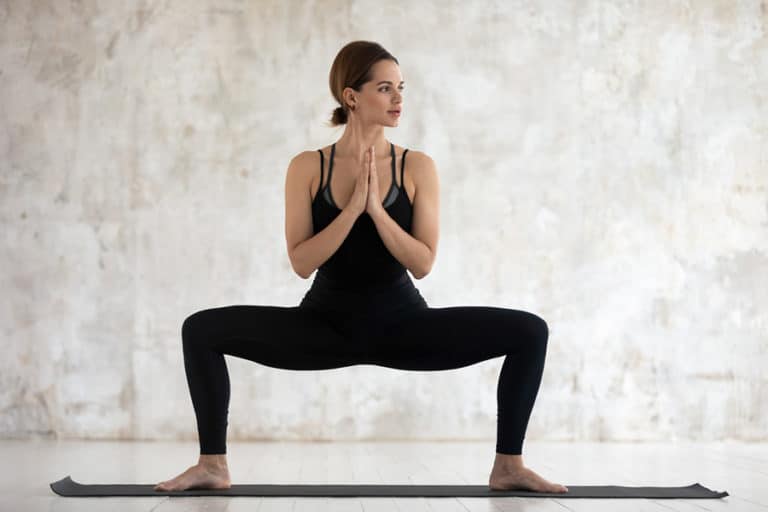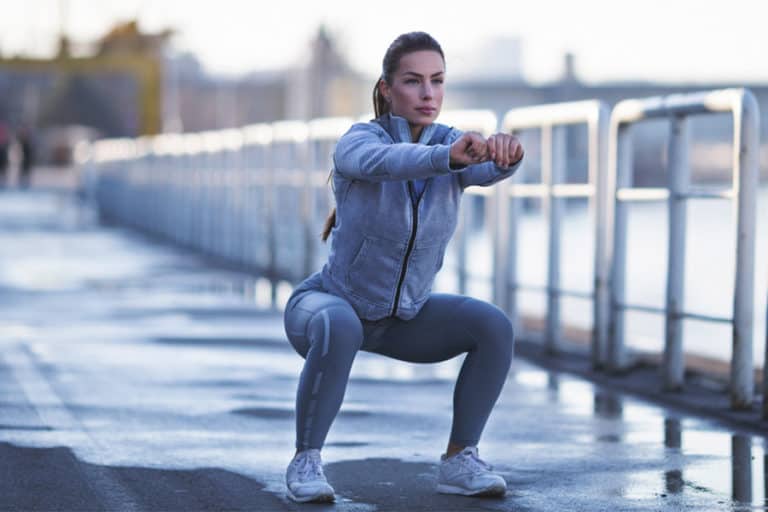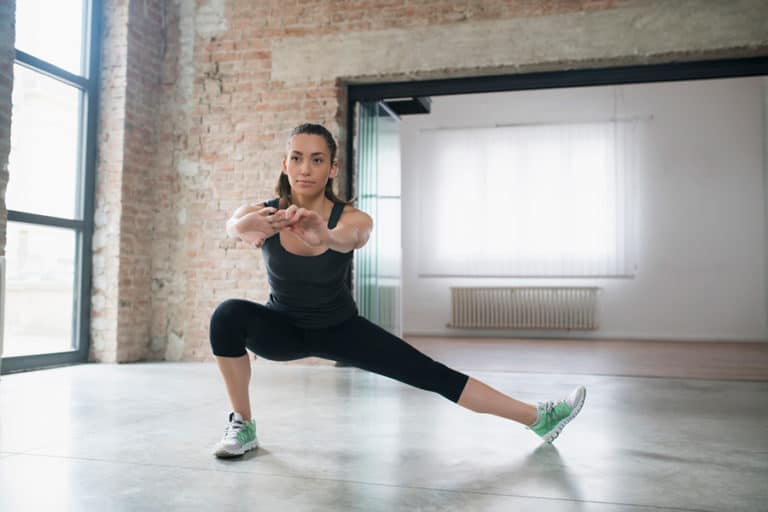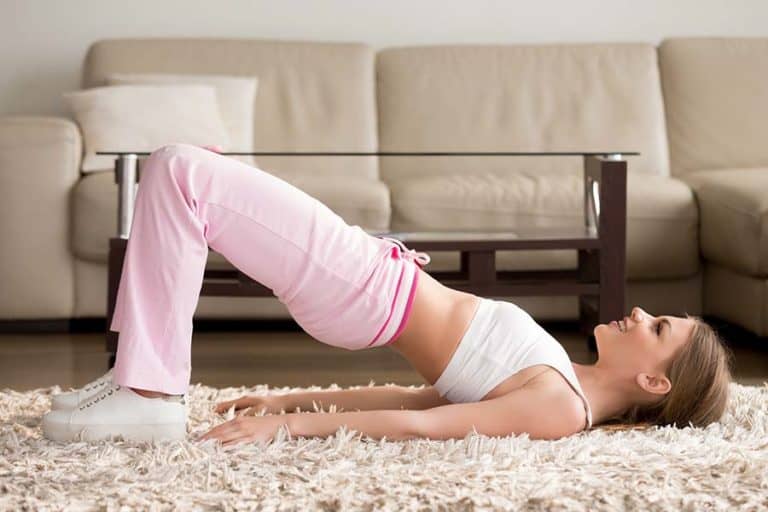What Muscles Do Deadlifts Work? An Informative Guide

Muscles worked | Deadlift variations | Benefits | Deadlifts vs. squats
Deadlifts are versatile compound exercises that engage multiple muscle groups and build full-body strength. While the primary muscles targeted by deadlifts are the lower body muscles, the exercise also engages the upper body muscles.
Understanding which muscles are involved in deadlifts is crucial to performing the exercise correctly and maximizing your results. So, let us delve deeper into the muscles engaged during deadlifts.
What muscles do deadlifts work?
A deadlift involves lifting a weighted barbell from the floor without momentum. Let’s examine the muscle groups involved and how each muscle is activated during the lift.
- Hamstrings
- Glutes
- Hip flexors
- Back muscles
- Core muscles
- Quads
1. Hamstrings
The hamstrings are a group of three powerful muscles on the back of your thigh- semimembranosus, semitendinosus, and biceps femoris. When you initiate the deadlift, your hamstrings are responsible for flexing your hips and extending your knees.
A study [1]National Library of Medicine: Electromyographic activity in deadlift exercise and its variants. A systematic review analyzed that during Deadlift exercises, the semitendinosus muscle exhibits slightly greater muscle activation than the biceps femoris muscle within the hamstring muscles complex.
2. Back muscles
Deadlifts are an effective way to target your upper body muscles, including both your upper and lower back.
The erector spinae in the upper back and the latissimus dorsi (lats) and thoracolumbar fascia in the lower back are engaged during deadlifts. In addition, shoulder muscles such as the trapezius (traps), pectoralis, deltoids, and serratus anterior are also involved to a certain extent.
The erector spinae, lats, and traps are the muscles that show the most significant activation during deadlifts compared to other back muscles involved.
3. Hip flexors
The hip flexors are a group of muscles located in the front of the pelvis and upper thighs. These muscles include the psoas major, iliacus, pectineus, sartorius, and rectus femoris.
They work with the glutes and hamstrings to extend the hips and lift the barbell off the ground. Exercises like deadlifts help to strengthen the hip flexors by making them contract against resistance during the lifting phase of the deadlift exercise.
Note: Overusing the hip flexors can also lead to hip flexor strain or injury. Therefore, it’s essential to maintain proper form and technique during deadlifts to ensure the hip flexors work efficiently.
4. Glutes
The glutes, including the gluteus maximus, medius, and minimus, are a group of muscles that work together to extend the hip and externally rotate the leg.
During deadlifts, the gluteus maximus [2]National Library of Medicine: Gluteus Maximus Activation during Common Strength and Hypertrophy Exercises: A Systematic Review is the primary muscle engaged as the main hip extensor generating force.
The glutes contract isometrically to stabilize the pelvis as the movement is initiated and concentrically contract to extend the hip joint, allowing for a successful lift.
The gluteus medius and minimus also stabilize the pelvis and prevent it from rotating or tilting during the lift.
5. Quads
Although deadlifts mainly target the posterior chain muscles, the quadriceps muscles also play a vital role in the exercise. These muscles are located on the front of the thigh and consist of four individual muscles: the rectus femoris, vastus intermedius, vastus lateralis, and vastus medialis.
They stabilize the knee joint and work with the glutes to lift the weight during the deadlift. Additionally, they help maintain proper form and balance alongside other muscles involved in the exercise.
6. Core muscles
During a deadlift, the core muscles, including abdominis and obliques, stabilize the body and protect the spine. They engage isometrically to keep the spine neutral and prevent it from rounding or hyperextending.
The core muscles also help transfer force between the lower and upper body during the lift and develop a strong and stable core.
7. Forearms
The forearm muscles are also engaged during deadlifts, as they are responsible for gripping the weight throughout the lift.
By training forearms through deadlifts, you can improve your grip strength, which can be beneficial for other exercises and everyday activities that require gripping and holding objects.
Deadlift variations
There are various types of deadlifts, each targeting different muscles. Let’s explore each variation and its corresponding target muscles:
1. Conventional deadlifts
The conventional deadlift is the most commonly performed variation of deadlifts. It involves lowering the weight completely to the ground, which effectively engages the posterior muscles of the back.
A study [3]PubMed: An electromyographic and kinetic comparison of conventional and Romanian deadlifts on comparison of the conventional deadlift with the Romanian deadlift found that the rectus femoris (quads) and gluteus Maximus (glutes) are more activated during the conventional deadlift than in the Romanian deadlift.
Conventional deadlift muscles worked:
| Primary muscles activated | Secondary muscles activated |
| Glutes, quads, hamstrings, spinal erectors, and lats | Core, traps, and forearms |
2. Sumo deadlifts
The sumo deadlift is a compound exercise that differs from regular deadlifts in appearance, range of motion, and muscle stress. It emphasizes leg muscles and can lead to more significant hypertrophy in those muscles. Both sumo deadlifts and sumo squats are great ways to train your lower body muscles.
Sumo deadlift muscles worked:
| Primary muscles activated | Secondary muscles activated |
| Glutes, quads, and trap | Core, forearms, lats, and lower back |
3. Romanian deadlifts
This deadlift variation targets the posterior chain muscles, particularly the hamstrings and glutes. It involves a hip hinge movement, with the weight held before the body.
It is then followed by a controlled weight lowering to just below the knee level before returning to the starting position.
This exercise helps to improve hip and knee stability, develop strength in the lower back and enhance overall body posture. It is essential to maintain proper form, keeping the spine in a neutral position and engaging the core throughout the movement.
Romanian deadlift muscles worked:
| Primary muscles activated | Secondary muscles activated |
| Hamstrings, spinal erectors, glutes, and lats | Core, quads, and forearms |
4. Stiff leg deadlifts
The stiff-leg deadlift targets the hamstrings while reducing the activation of major muscles in the quads.
This deadlift increases the eccentric workload for the hamstrings, making it the most effective variation for this muscle group. Moreover, unlike other deadlifts, the exercise also engages the calf muscles [4]ResearchGate: Electromyographic Activity of Lower Body Muscles during the Deadlift and Stiff-Legged Deadlift, increasing its importance in lower-body training.
Stiff leg deadlift muscles worked:
| Primary muscles activated | Secondary muscles activated |
| Hamstrings, glutes, spinal erectors, and lats | Quads, core, traps, and forearms |
5. Hex or Trap bar deadlifts
The trap bar or ‘hex’ deadlift is a variation of the deadlift where the lifter is positioned within the bar, which can be less taxing on the lower back. The different shapes of trap bars can result in varying degrees of difficulty.
The trap bar deadlift also provides mechanical advantages that allow for heavier lifting compared to conventional deadlifts.
Trap bar deadlift muscles worked:
| Primary muscles activated | Secondary muscles activated |
| Spinal erectors, lats, glutes, and quads | Hamstrings, forearms, traps, and core |
Benefits of deadlifts
Here is a list of various benefits deadlifts offer:
- Increases muscle mass: Deadlifts can also help increase muscle mass, especially in the back, glutes, and hamstrings. This can lead to a more muscular and defined physique.
- Enhances bone density: Deadlifts are a weight-bearing exercise, which means they can help improve bone density and reduce the risk of osteoporosis.
- Improves grip strength: Since deadlifts require a strong grip to hold onto the weight, they can help improve grip strength and forearm muscles.
- Improves posture: Deadlifts work the muscles of the upper and lower back, which can help improve posture and reduce the risk of back pain and injury.
- Enhances overall fitness: By working for multiple muscle groups at once, deadlifts can help improve overall fitness and physical performance, making everyday activities easier to accomplish.
Deadlifts vs. squats
Deadlifts and squats are both compound exercises that target multiple muscle groups in the lower body.
While squats focus more on the quads and glutes, deadlifts put more emphasis on the posterior chain, including the hamstrings, glutes, and lower back. Deadlifts emphasize hip hinge movement and involve driving the hips forward to lift the weight, while squats focus on pushing the hips back and down.
Here’s a list of the muscles targeted with squats and deadlifts exercise:
| Deadlifts | Squats |
| Hamstrings | Quadriceps |
| Back muscles | Glutes |
| Hip flexors | Calves |
| Glutes | Hip flexors |
| Core muscles | Adductors |
| Forearms | Hamstrings |
Conclusion
Deadlifts are essential for building muscle mass and increasing strength, but mastering the proper form can be challenging. Thus, start slow, and be sure to maintain good form throughout the exercise. Talk to a certified trainer to help you get the most out of your deadlifts.
References
| ↑1 | National Library of Medicine: Electromyographic activity in deadlift exercise and its variants. A systematic review |
|---|---|
| ↑2 | National Library of Medicine: Gluteus Maximus Activation during Common Strength and Hypertrophy Exercises: A Systematic Review |
| ↑3 | PubMed: An electromyographic and kinetic comparison of conventional and Romanian deadlifts |
| ↑4 | ResearchGate: Electromyographic Activity of Lower Body Muscles during the Deadlift and Stiff-Legged Deadlift |







